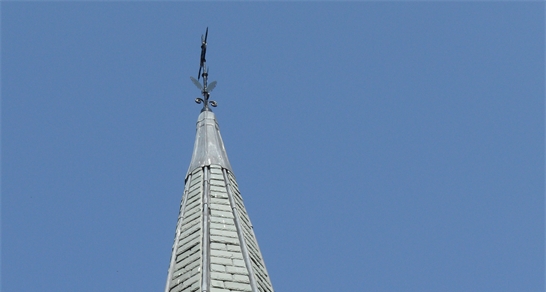Conservation of Island Churches
Victorian Churches on the Island
A village is often built around an old church, that has seen hundreds of years of use. These buildings have evolved gradually, changing as the fortunes of the local area change. They often define the character of a village – just think of Shalfleet Church or Brighstone Church, solidly built of local stone.
The Island population rapidly increased in Victorian times and towns expanded. Many new churches and chapels were built, as church going was still the norm every Sunday.
Today we tend to lump these Victorian churches together with some disparagement, but perhaps we should take more concern over them. They give us a great character statement, often with tall spires towering over the nearby Victorian houses.
Ryde boasts two very tall Victorian spires amongst the seven Victorian churches there. The youngest,
All Saints Church in Queen’s Road, was designed by Sir George Gilbert White, the famous Victorian architect who followed Pugin’s Gothic revival. All Saints was constructed from 1872, with the spire completed in 1882. The style is described as “High Victorian.” The interior was certainly designed to inspire awe and wonder, and includes several Scott features such as the reredos, pulpit and font. The church was an outward sign of the prosperity of Victorian Ryde.
Holy Trinity Church Ryde was constructed earlier in the 1840s. This steeple is described as a “masterpiece” owing to the general proportions and the detail.
The Victorian Ryde Methodist Church has recently undergone a “revamp”, arriving in the 21st century with little external change. We hope that it will prove as successful as the conversion to two stories of the Congregational Church in George Street. These buildings must be used to provide money for maintenance.
The Minster in Newport is another Victorian church, but this time rebuilt on the site of a much earlier church. Prince Albert laid the foundation stone in 1854, and Queen Victoria commissioned the monument to the daughter of King Charles I, Princess Elizabeth, made by Baron Marochetti. That sculptor also made a medallion portrait of Prince Albert which can be seen on the north chapel wall. There are so many other things to look at in the Minster, such as the 1631 pulpit – one of the most richly carved in England for that time. The Minster has many fundraising events, often for the continuing restoration work that needs to be carried out, and has been carried out so successfully.
Another church that epitomises Victoriana is Whippingham. Rebuilt between 1854 and 1861, Queen Victoria and her family worshipped here. Prince Albert introduced a Germanic feel to the design by A J Humbert. This is another church that has recently experienced considerable excellent restoration, from weathervane to internal plasterwork. On Grade 1 listed buildings we have come to expect this, but it needs funding.
We should all take a closer look at these Victorian masterpieces, and not take them for granted. Visit them, look, enquire and contribute. We should all support our Victorian churches.
[Go Back]

